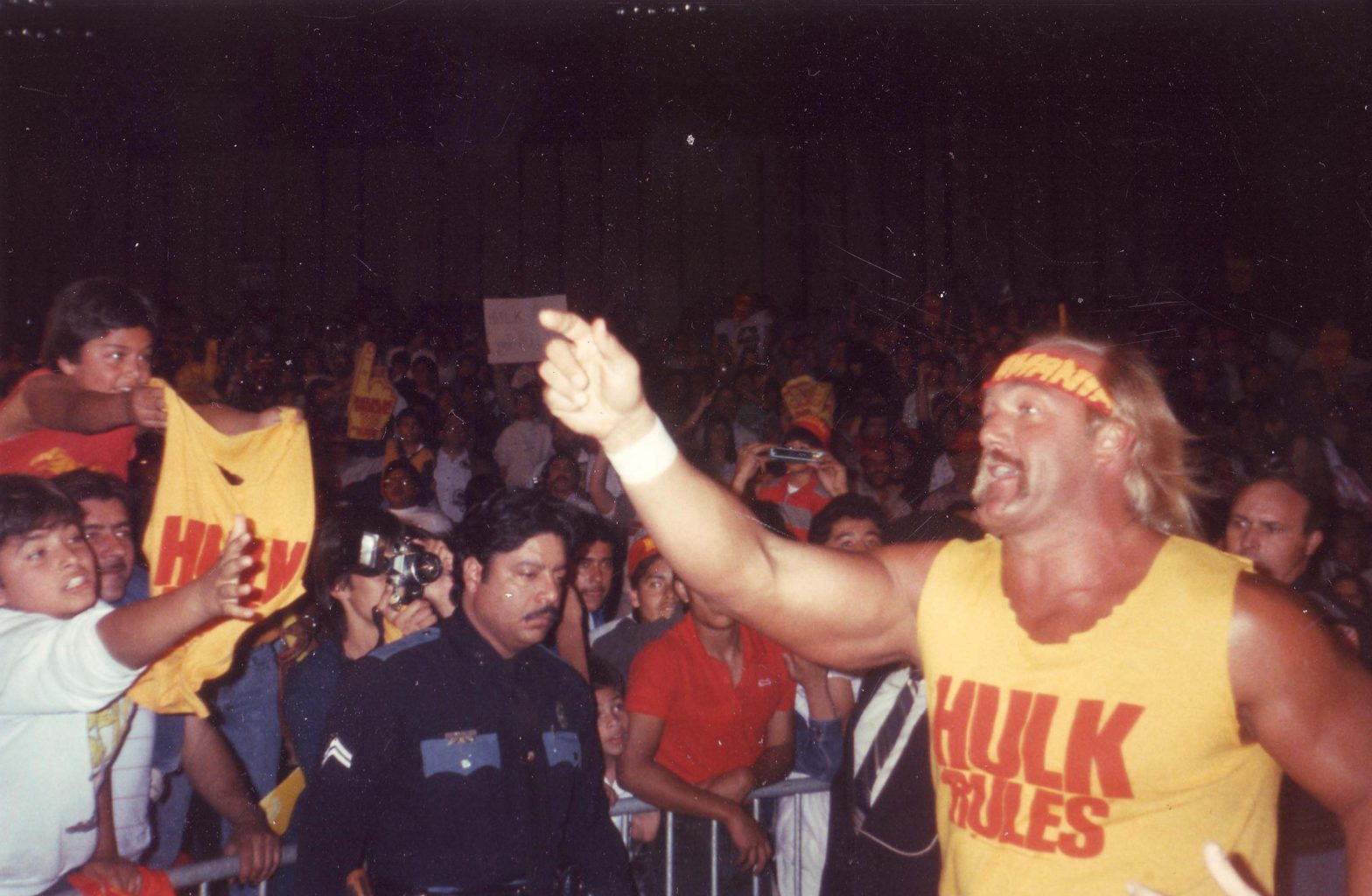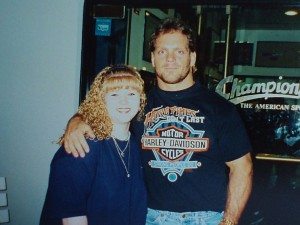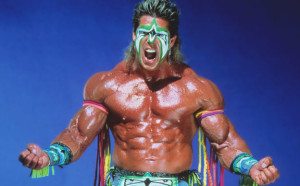When Bigger Isn’t Better: Steroids and Professional Wrestling
If you’re a professional wrestling fan under the age of 8, I suggest you click the ‘x’ in the top right of your screen, because you’re not going to want to read this.
Still here? Then now that the kids are gone I can lay out three important facts about the wrestling industry:
1) Wrestling is mostly scripted.
Okay, this one probably isn’t news to you and if it is, you really haven’t been paying attention. It used to be only those within the inner circle of the industry who were told this – Ric Flair claimed in his autobiography that a rival was not allowed into his hospital room after his plane crash in 1975 through fear that he would be finished off – but it has been common knowledge since 1997.
Storylines and the winners of certain matches can be decided some months in advance and are often subject to change due to fans’ reaction and the popularity of certain wrestlers, not which Superstar can beat the other on the night. Vince McMahon publically admitted in ‘97 that the industry should probably more accurately be referred to as “Sports Entertainment”, and it was the addition of this suffix that has led many to dismiss wrestling as “fake” and, therefore, “safe”.
However, despite competitors not actually trying to hurt each other, the physical toll taken on the bodies of wrestlers is very real. Doctors have claimed that every “bump” (and that is the technical term) that a wrestler takes falling to the ring is the equivalent of being hit by a small car at 20mph. Wrestlers train for several years learning how to do these moves safely, but taking these hits night after night is bound to do some damage whether or not the impact sounds of punches are made by wrestlers stamping their feet.
2) A high percentage of the superhero physiques of wrestling ‘Superstars’ have been aided by anabolic steroids and other performance enhancing drugs.
This one, too, is perhaps unsurprising. After all, Hulk Hogan weighing in at 302lbs and boasting 22inch pythons (that’s biceps in wrestling jargon) was maybe too much for the apparently scrawny kid from Venice Beach, California to achieve by himself.
Exactly what constituted the regime of “training, eating your vitamins and saying your prayers” that Hogan championed as inspiration for the youngsters that idolised him became very clear when he gave sworn testimony during the McMahon steroid trial of 1994. He claimed that taking steroids in the 1980’s was “just something that wrestlers did” and that because he “had a prescription” he did not believe it to be wrong in any way at the time. Drugs that offered bigger muscles and quicker recovery were something that you would have been a fool not to take during this era, according to Hogan. He went on to say that he no longer took supplements of this type, but several other suspensions, failed drugs tests, investigations and common sense when viewing the physiques of wrestlers who have gained muscle mass that simply doesn’t fit their bodies suggests that this is still something that is rife within the industry.
This, especially when viewed in conjunction with the first fact, can also easily be dismissed as not a major issue. As wrestling is not competitive in the traditional sense and relies somewhat on appearances, steroids can be seen as a means to an end that doesn’t offer advantages to certain wrestlers over others as would be the case in regular sport.
3) At least 36 former WWE wrestlers have died under 60 from heart attacks, drug overdoses and/or suicide since 2000.
This is where it becomes much more serious. While the first two may have been the facts that everyone knows about wrestling, this is something that is rarely talked about even within the industry and the main cause of which is still unclear. The shocking number of early fatalities from just one wrestling promotion is too high to be a coincidence, and the debate as to whether the use of steroids has any bearing on this continues to this day with strong arguments on both sides. Many of the side effects of steroids have been proven to be reversible once the subject stops taking them, but studies on the effect of prolonged use on the body and heart as well as the possibility of onsets of depression, anxiety and increased likelihood to take other drugs have never been done. The US Government’s refusal to condone any use of steroids means that these are unlikely to take place any time soon.
To attempt to understand this situation, I will look at the deaths of 3 high profile wrestlers in greater detail: Eddie Guerrero, Chris Benoit and The Ultimate Warrior.
Eddie Guerrero
On November 13th, 2005, Eddie Guerrero was found dead in his motel room at The Marriott City Centre in Minneapolis, Minnesota, by his nephew, Chavo. Despite Chavo’s attempt to resuscitate Eddie, he was pronounced dead when paramedics arrived. An autopsy revealed that Guerrero died as a result of acute heart failure due to underlying atherosclerotic cardiovascular disease aged just 38.
An investigation by Sports Illustrated which uncovered a steroid and HGH (Human Growth Hormone) ring that supplied to athletes from several sports named Guerrero as one of many wrestlers who had received a large quantity of growth hormone ‘human chorionic gonadotropin’ and the steroid ‘stanozolol’ in early 2005. These apparently did not have a visibly detrimental effect on Eddie’s health, as Chavo claimed that his uncle had been “in the shape of his life” in the weeks leading up to his death.
However, years of struggling with alcohol and prescription painkiller addiction are likely to have put a strain on Eddie’s heart that would certainly not have been helped by the continued use of steroids and high levels of physical activity. The combination of these brewed into a vicious cocktail that Guerrero’s body could only drink down for so long before giving out suddenly and without any real warning.
Chris Benoit
On the 25th June 2007, following several missed appointments and calls from concerned friends and relatives, Chris Benoit was found dead in his home along with his wife and son by police. After the episode of WWE RAW aired on the same day was replaced by a 3-hour tribute to Benoit, it became clear from initial evidence that Benoit had strangled his family and then hanged himself using the cord from one of his home weight machines. The WWE quickly distanced themselves from Benoit, erasing archive footage of his matches and removing his finishing moves “The Crippler Crossface” and “The Diving Head-butt” from their video games as well as publicly condemning his actions.
This sparked a fierce debate about the effect of steroids on the mental health of wrestlers and other athletes. Benoit was well known as a heavy user of steroids in his early years in the industry and several muscle building drugs were found in his home by police after the incident. However, toxicology reports taken posthumously and published on the 17th July 2007 found that the amount of steroids in his system at the time of his death were consistent with medicinal use, which was later found to be necessary for a condition that Benoit had been suffering with for around 2 years.
What would appear to be more of a contributing factor to Benoit’s case was the state of his brain. The doctors who performed his autopsy claimed it looked like “that of an 85 year old Alzheimer’s patient” and that several untreated concussions in his career had led to advanced dementia at 40 years old. It is true that Benoit was never afraid to put his body on the line for the purposes of Sports Entertainment, the aforementioned diving head-butt finishing move had him leaping from the top rope in every match head first onto the canvas and he was also one of the only wrestlers willing to take a chair shot to the back of his head; something which has been described by doctors since as “just stupid” due to the heavily increased risk of concussions. Steroids have been said to induce what is known as “roid rage” in certain users, but this is heavily disputed and the behavioural issues of Benoit are more consistent with his diagnosis with dementia.
The Ultimate Warrior
Almost exactly a year ago, The Ultimate Warrior (born James Hellwig) died having made public appearances on each of the 3 previous days. Warrior was inducted into the Hall of Fame on April 5th, appeared at Wrestlemania XXX on April 6th, appeared on RAW on April 7th and died on April 8th 2014 from heart failure aged 54. Interviews with fellow wrestlers have found that Warrior was seen sweating and severely out of breath backstage at each of these events and the speech Warrior made on RAW is uncomfortable to watch – this looked like a man who knew his time was nearly up.
Never a very accomplished technical wrestler, Warrior was recruited to the then WWF purely because of the incredible physique he had built through years of competitive bodybuilding. Steroids had helped Warrior to the top of his profession and he continued to use them whilst rising through the ranks of the wrestling business. Despite terrible matches and a reportedly poor attitude, Warrior was pushed because of his charisma in front of the cameras and became World Champion in 1990 at Wrestlemania VI.
The years following would be ones of turmoil that saw Warrior either skipping shows over disputes or suspended due to his experiments with growth hormones. Up until his retirement in 1998, Warrior was in and out of the WWF and WCW whilst constantly flirting with quitting the business.
As with Guerrero and Benoit, the extent to which the use of steroids contributed to Warrior’s death is unclear. Although it may not have done anything to improve his health, Warrior’s father and paternal grandfather both died in their early 50s from similar heart conditions. Whether his death was due to years of steroid abuse or a somewhat inevitable hereditary trait is difficult to say without research that is now impossible.
Did steroids end these young lives? Possibly. It is rarely the case outside of murders or accidents that death is the result of a single cause, but rather a combination of factors resulting in the ultimate end.
But I reiterate the statistic at the top of this article, 36 possibly avoidable deaths in just over 15 years is something which cannot be ignored. If, as Hogan claims in the clip above, the current generation of professional wrestlers have been “reeducated” as to the dangers of these drugs, then deaths may decrease in years to come. But, as size continues to matter in the industry and a number of known steroid users reach an age where their bodies begin to deteriorate naturally, we may only be seeing the beginning.




Comments